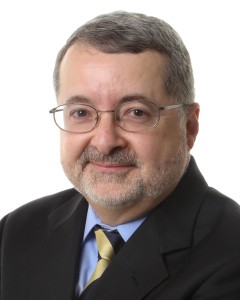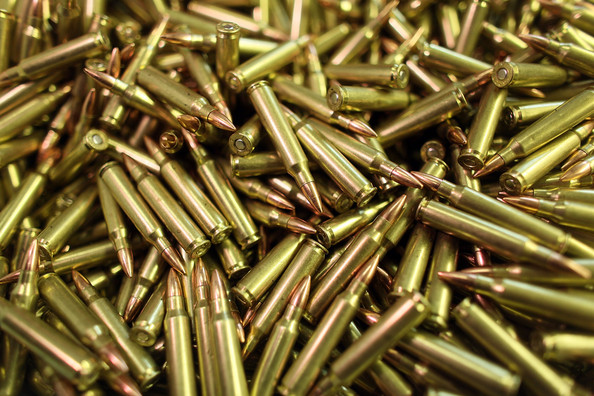
We had a recent opportunity to speak with Michael Bazinet, Director of Public Affairs for the National Shooting Sports Foundation, Inc. in regards to ammo shortages, and the future of the NSSF.
WLS) What is the state of the ammo industry now? Are they backlogged, and if so where is the bottleneck taking place? Brass, lead, Primers?
MB) All the ammunition makers are working their facilities 24/7 to meet an unprecedented consumer demand. One is opening a new plant. Another converted warehouse space to production. Imports are also higher than ever.
WLS) We have noticed that the shelves are starting to be restocked, albeit slowly, when do you think that consumers will see the same stockpiles they had prior to the rush on ammo?
MB) We are also hearing that the shortages are starting to ease around the country. It’s not possible to predict today when store shelves will be fully stocked again. Keep in mind that we have seen a pretty steady rise in firearms ownership over the last decade that has accelerated over the last three years, such that we have seen 37 straight months of year-over-year growth as measured by NSSF-adjusted NICS numbers. New owners of firearms these days are taking their guns to the range and shooting – often. In addition, it is no longer unusual for people to buy ammo in bulk. They can save money and it’s a consumer habit they already employ for other consumer goods.
WLS) Who would blame for the shortage? Government consumption or consumer?
MB) Fears that new federal and/or state laws may restrict future purchase of ammunition have driven consumers to buy more (get it while we can thinking). Internet rumors have been flying about large government purchases of ammo. But most people don’t understand how the federal procurement system works and the difference between multi-year authorizations and actual purchases that physically bring the ammo into a given agency. The current demand is consumer demand, not the result of government purchases. See the Federal and Hornady websites, especially the latter, for some comments on this.
WLS) We have seen prices rise dramatically due to the ammo shortage, but we have also seen consumers willing to pay more, besides basic supply and demand, do you expect prices to come down, or do you think, consumers will continue to pay a premium price because they have demonstrated a willingness to do so already?
MB) These shortages will ease, a process that seems to have started, at least in some parts of the country. Supply and demand will come back into balance. I can’t say what will happen with regard to prices, but the rules of the marketplace has not been repealed.
WLS) What do you see in the future in regards to ammo advancement?
MB) Your question about the future of ammunition is best directed toward the manufacturers. However, it is an industry that is responsive to the marketplace and that produces an outstanding selection of quality cartridges in numerous calibers with myriad features to meet that consumer demand. We’ll continue to see innovation.
WLS) The NSSF is pushing to get the AWB removed in Connecticut, can you tell us more about that? And if you are successful, do you foresee moving to other states with the same ban?
MB) NSSF has filed suit in federal court for the District of Connecticut seeking to overturn the entire 139-page law passed in utter haste by the Connecticut General Assembly without most members even reading the provisions of the omnibus bill. That bill included a ban on a variety of modern sporting rifles based on their external characteristics alone (such as a pistol grip), magazine capacity restrictions and a raft of other restrictions. The basis for the suit is that the emergency certification exemption that was used to pass it violated state statutes, the CT constitution and the U.S. Constitution.
WLS) You had mentioned an increase in new shooters, have you seen this increase translate into people competing?
MB) Yes, not only are the ranges busier than ever but the competitions are drawing more shooters than ever before. See this item as one example. We do not have stats on this trend, but anecdotally we know that it’s true.
WLS) Being at what a lot of people are considering “ground zero” (Newtown Conn.) of the gun debate, locally do you see any backlash to your own organization?
MB) Understandably, emotions have run high and there are many connections between people in our organization and the school that suffered this unspeakable tragedy. Our hearts are heavy, too. We try to be very respectful of the community even as we carry out our responsibilities to represent our industry and our members.
WLS) In what way is the NSSF expanding? What services do they currently offer and what do they plan on doing in the future?
MB) NSSF has been steadily expanding and we now have more than 8,000 members. While we have some individual members, most are involved in the shooting, hunting and outdoor trades. In recent months, we have re-launched our Project ChildSafe project and have committed additional funds to our Don’t Lie for the Other Guy program. Our newest initiative, FixNICS, involves getting all the states to make sure all the adjudicated records they have on prohibited individuals are sent to the NICS system. The best way to see what we do (and it’s a lot) is to visit our website, www.nssf.org.
The National Shooting Sports Foundation is the trade association for the firearms industry. Its mission is to promote, protect and preserve hunting and the shooting sports. Formed in 1961, NSSF has a membership of more than 7,000 manufacturers, distributors, firearms retailers, shooting ranges, sportsmen’s organizations and publishers. For more information, log on to www.nssf.org.


You must be logged in to post a comment.